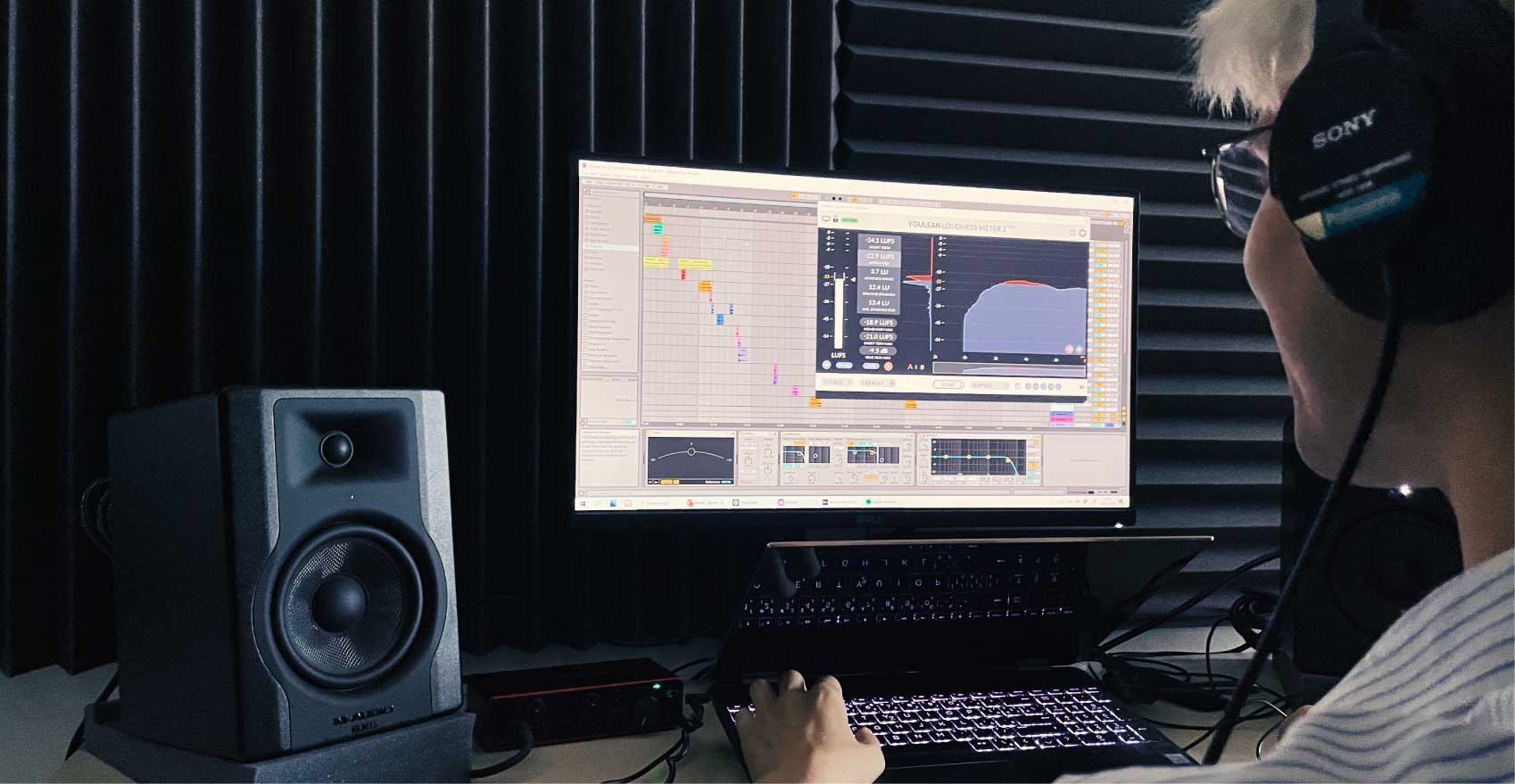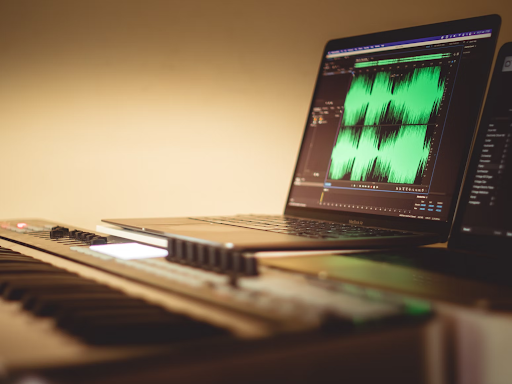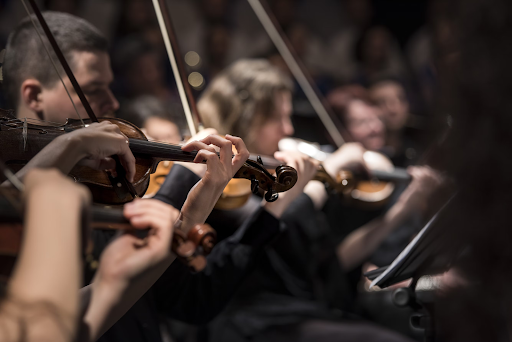Choosing the Right Music for your Animation

AIn the early days of cinema, before the introduction of sound, films were usually accompanied with live music - often an organ. Part of the reason for this was to hide the sound of the noisy projector but more importantly, it was used to add drama and mood to the film.
Things have changed a lot since then but this underlying principle has remained constant to this day. Film and music have always been closely connected but adding music to a film is often strangely overlooked and not given the importance it deserves.
One of the first animated films to have synchronised sound and music was Steamboat Willie in 1928.
In this blog we’ll look at the importance of music in animation as well as a few ideas for what you should think about when adding music to your own film.
Listen carefully. This is important. Animation is a visual and auditory experience.
Buckets of time and money are spent on perfecting the visuals, especially these days with 3D animation and SFX for movies. The term ‘eye candy’ has become commonplace for visually stunning animations that seem to continually outdo the previous benchmark.
Visuals take up most of the focus, perhaps rightly so, as ultimately it has to be admitted that the visuals ARE more important. But forgetting or not paying enough attention to the sound can have a hugely detrimental effect on a film.
By sound we mean dialogue, sound effects and music (as well as ambient background noise). Together they comprise the sound design of a film

How Music Works
Music has been an integral part of human society since forever and works on a profound level. Whether it's muzak in a supermarket or being at the front row at a concert of your favourite singer, music affects us constantly. Certain frequencies are known to release serotonin, dopamine and endorphins. Minor and major chords can also trigger specific emotions such as euphoria or melancholy.
Music is built by using three main elements: rhythm, layering and melody. The rhythm should lead throughout the piece, building a constant structure around which the visuals move. For animation, the rhythm defines the kind of mood the music and sound are creating.
The speed of a rhythm is usually connected to the speed of the human heart. Energising music has a speed above your pulse rate: between 60-70 bpm. Above that it brings on feelings of danger and adrenalin. Slower than 60 and it becomes reassuring but can also bring on a sense of dread, depending on the melody.
A strong rhythm drives a film forward, making it easier to engage with it. It focuses our attention while we watch the visuals. It creates a map that helps to orient our senses, creating signposts to enhance and highlight the emotional beats of the film.

Why music is important for your Animation
So music can have a strong impact on your film and the way the audience feels. For this reason it should be included as a key part of the creative process and not added as afterthought. Used well, in combination with the visuals and other elements of the sound design, it can create a deeper, more emotionally rich experience. It can be added at any time in post-production - sometimes at the end or the film can be edited to the beats and rhythm of the music. Knowing the music you will be using in advance definitely helps.
Choosing a certain piece of music determines the mood you want to set, the energy level you want to sustain, and many other factors. Music creates an emotional connection between the film and the audience. It can establish the importance and symbolism of characters, as well as past and future events, by associating each character or story element with a specific musical theme.
How Music can Affect and Change the Mood of your Film
The same scene can have a completely different meaning by using different styles of music.
Probably the best way to show how music can change the meaning of a scene is with a practical example. This youtube clip of a scene from the Lion King shows the same scene accompanied by six diverse musical styles. Each version becomes radically different, just by changing the music. There’s dynamic, sad, upbeat, ominous, dramatic… and then the final one that was actually used in the film. As you can see (hear), this music is in sync with the visuals and the tone of the story and the world… it’s spiritual and inspiring… literally the coming of a new dawn. The others aren’t necessarily wrong but the chosen final soundtrack fits perfectly.
Although constrained by some technical and practical parameters, the creation of an animated film involves making a series of personal choices - it’s ultimately a subjective process. You choose the story, the characters and the world they inhabit. And it’s the same for the music you choose to accompany the film. And as a creative decision, it’s logical that you will gravitate towards music that you ‘like’. But as well as pleasing yourself, it's also important to keep your audience in mind and in particular, choose a piece of music that fits your film.
The choice of instruments used in the music can impact the mood created by the music. Natural, acoustic instruments usually have more tonal presence than electronic ones and are warmer and more intimate. Electronic instruments can create more expanse and distance and can seem colder and impersonal.
Another choice is whether to use music that has vocals. Vocals such as a choir can be used as an instrument in themselves and invoke a very specific meaning. Vocals with distinct lyrics can add another layer of dialogue and impact the meaning of a scene - either supporting it or acting as an ironic counterpoint.
Music shouldn't dominate and overpower the visual but complement them. It is said that the best soundtrack is one that you don't notice while watching a film - it should affect your emotions without drawing you out of the viewing experience.
Sometimes the purpose of the animation will determine the choice of music. If it's for an explainer video or documentary, it should be neutral and (usually) instrumental only - so it doesn't distract or overpower the information being provided. If it's for an advert, the music should be appropriate for the brand and message. If the ad has the classic problem-solution structure, then use downbeat music when talking about the problem and upbeat for the solution. If it's for a short film or feature, the creative restraints are less etched in stone.
And finally, sometimes a sequence doesn't need any music. 'Do I need music for this scene?' should always be asked. Silence can send a message and create a mood too.
Obtaining Music for your Film
Wanting a piece of music for your film and being able to use a piece of music for your film are two different things.
There are various scenarios for legally using music in films, but the bottom line is that to use music that you don't own in a film that will be shown to the public, you need a licence giving you permission.
Music has been created by a musician for whom creating music is a career and livelihood. That means it's copyrighted and it's only right that they should be compensated in some way for their work.
Here are some possible scenarios and solutions:
Create your own Music
Perhaps the easiest (and cheapest way) but probably not the best. If you have any musical talent and experience, you can create your own music and software today makes that very easy. If you create your own music, you own it and can do what you want with it.
Use Someone Else's Music with their Permission
If you know a musician or composer who agrees to let you use their music then great. Maybe they'll ask for compensation or maybe they won't but you should still get some kind of legal licence giving you permission. .
Use Copyright-free Music If you don't want to pay for the music you use, there are many musicians out there who have made copyright-free music available. There's also royalty-free music for which you don't pay royalties but still probably need to pay for the licence. Licensing can get complicated, so it's best to do some research and find out the options.
Buy Licenced Music You get what you pay for, as they say. If you want good quality music for your film, you're probably going to need to pay for it if you have the budget. There are lots of companies out there who provide filmmakers with music that can be used legally and they are able to cater to different needs and different budgets. They also cover all the legal side of things which is super-helpful. Once you find a company you like that fits your needs, you can use them again and again. Here's a list of some of the main ones and a good place to start if you are looking for music.
Using Well-known Music
If you want a specific song that is well known, that's going to cost more. The copyright of the music is usually owned by the publisher and if you can't live without using a specific piece of music or song in your film, you'll need to get in touch with them. For student films and non-commercial work you can sometimes get it for free. Otherwise you'll need to fork out.
Animated music videos
And finally, a blog about music and animation wouldn’t be complete without a quick mention for animated music videos. In this case the visuals should complement the music and not the other way round but the medium is a favourite for many music video creators because of the creative freedom that animation provides. Anything is possible and the only limit is your imagination.
Aha’s Take On Me, Peter Gabriel’s Sledgehammer and Gorillaz’ 19-2000 are just three classics from over the years. There's many more and here’s a great list of contemporary ones.
